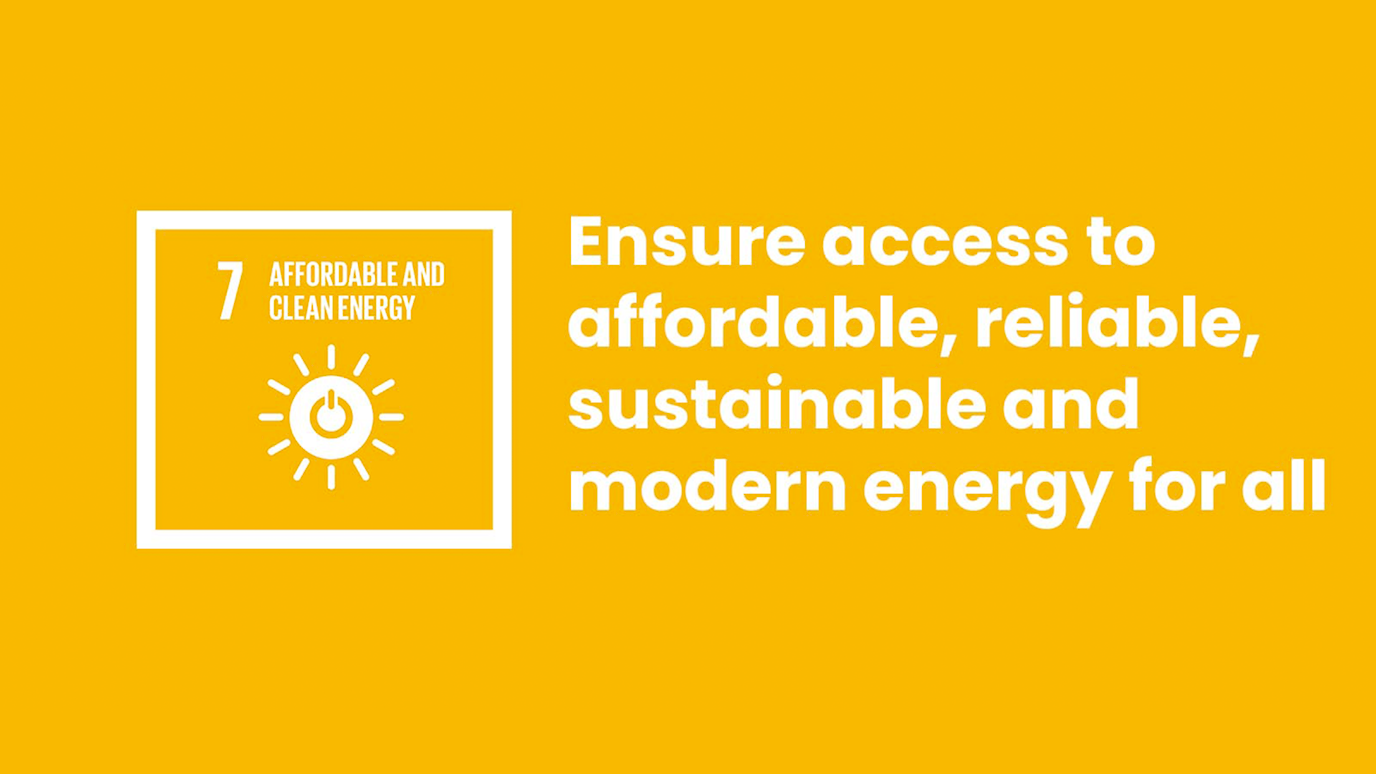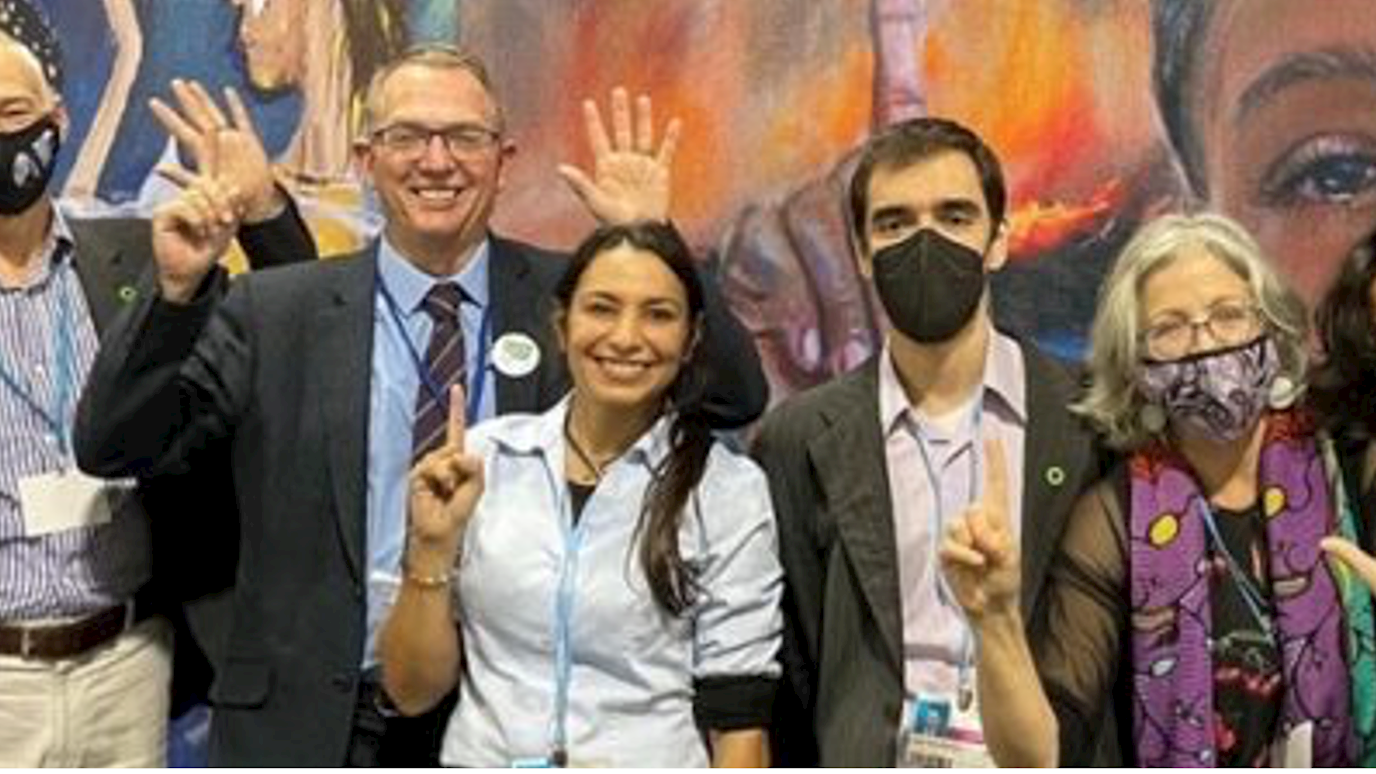The seventh Sustainable Development Goal addresses the future of energy use. The subtitle highlights the scale and extent of the challenges involved, writes Stefanie Kuenzel.

Whatever future energy landscape we might wish to create let alone sustain it will have to have at its heart: affordability, reliability, sustainability, equity (for all) and modernisation. In 2020, global energy consumption fell by 4 per cent due to the pandemic, with a recovery that is shaped by uncertainty. China is the largest energy consumer, with around a quarter of the world’s energy supplies.
Where does the world’s energy come from? Conventional fuels such as oil, gas and coal underpin global consumption. In 2019 approximately 33 per cent of the fuel mix was made up of oil, 24 per cent was gas and 27 per cent was coal. Beyond the ‘big three’, the remaining energy was made up in very similar shares by nuclear, hydro and renewables. Crops, waste, algae biomass are all showing signs of potential for further growth in the biomass sector. Hydro, wind, solar, as well as other renewables, are growing in importance and the world’s energy sources and consumption patterns vary from region to region. Electrical generation would also include nuclear, and its importance varies enormously, with France the leading beneficiary of nuclear power. In Norway, 99 per cent of all power generation comes from hydropower.
With the large-scale roll-out of renewables in many countries, there is now the promise of ‘cleaner’ electrical energy. Governments around the world are also working with the energy sector to further support infrastructural expansion and policy incentives. The Biden administration is committed to investing $2 trillion in clean energy projects and decarbonising the energy sector by 2035. Electrification is seen as a replacement pathway to use the benefits of renewable energy generation, for purposes which previously relied on fuels, rather than electricity. Globally, it is expected that the world’s electrical generating capacity will need to double between 2008 and 2035.
The UK’s Royal Academy of Engineering published a report in 2005 on the guiding principles for engineers regarding sustainable development. This document presents three intersecting dimensions of energy sustainability, namely techno-centric, eco-centric and socio-centric concerns. Using this concept of a sustainable energy system enables us to consider SDG 7 in a little more detail.
The three dimensions of sustainability. Adapted from Engineering for Sustainable Development: Guiding Principles.
Equity (for all), affordability and reliability
Equity here is defined as a fair access to energy for all, including inter-generational justice (access to energy for current and future generations) as well as intra-generational justice (avoiding fuel poverty, for example, across nations, socio-economic groups or age).
In the first instance, equity, affordability and reliability can be considered together, as they form part of the socio-centric concerns. For the individual, there is little or no difference if they cannot obtain essential energy due to economic pressures, or due to intermittency or unreliability of power supply. Hence both reliability/availability and affordability are required for equity in access to energy. Energy-poor communities are also far more likely to fall back on more polluting and inefficient energy sources.
Sustainability
Equity is one requirement for sustainable energy, along with other socio-centric concerns. Renewable energy sources are not only required for eco-centric reasons, but also simply because non-renewable energy sources by their very definition are finite resources. While fracking technologies have extended the working life of gas supplies, aggregate fossil fuel demand is set to peak in 2027 – with coal peaked already while oil is predicted to peak in 2029 and gas in 2037. The sustainability of the renewable energy sector will also need to be carefully audited, because it relies on metals and minerals to enable the construction and maintenance of a renewable energy infrastructure.
Modernisation and power systems research at Royal Holloway
How we use and share the available energy will inevitably raise engineering-related challenges. Power systems research at Royal Holloway is exploring the potential for further innovation in the ways in which we generate, transmit, store and distribute energy. Our research in power systems literally concentrates on ‘keeping the lights on’, supporting system resilience, reducing CO2 emissions, and phasing out fossil fuel usage. Power system engineers around the globe are intimately involved in the required transformations, working on projects addressing energy conversion, transportation, and storage.
Energy modernisation is a first order challenge for all countries and communities. Without power, the health and safety of citizens is jeopardised. Power-cuts are disastrous and unreliable supplies of energy can quickly compromise the health sector. Energy generation is a national security consideration; cyber-hacking is just one of many potential dangers. The energy system is a hugely complex infrastructure involving service providers, end-users, administrators, political leaders, and asset owners and operators. Modernising electrical infrastructure demands investment, and ‘smart’ technologies and equipment need to be efficient, reliable and resilient. Severe weather, flooding and wildfires all pose challenges for energy modernisation.
Technological investment and energy justice
How much energy each of us can use in the future is a technical as much as a moral question. The answer depends in part on how far we can develop the cleanest energy sources available, as well as converting and transporting this energy using the best technology and system planning. New devices on the demand side are highly energy efficient. Some of the technology already under investigation and development will help us to transition towards scaled-up energy storage technology, demand side management (technology which makes use of demand flexibility) or advanced developments for renewable energy generation.
Technological investment and solutions are crucial to the success of this goal, but they are by no means sufficient in themselves. Investment and innovation are often skewed in favour of the most privileged in the world, and global energy consumption is also shaped in large part by national and regional economic and developmental needs and priorities.
Further energy efficiency improvements can drive significant reductions in greenhouse gas emissions, but it has to be accompanied by energy justice.
Dr Stefanie Kuenzel is a Senior Lecturer in the Electronic Engineering department at Royal Holloway University of London. Dr Kuenzel is the Head of the Power Systems group and Editor for IEEE Transactions on Sustainable Energy, IEEE Power Engineering Letters and Associate Editor for the Journal of Modern Power Systems and Clean Energy.
























